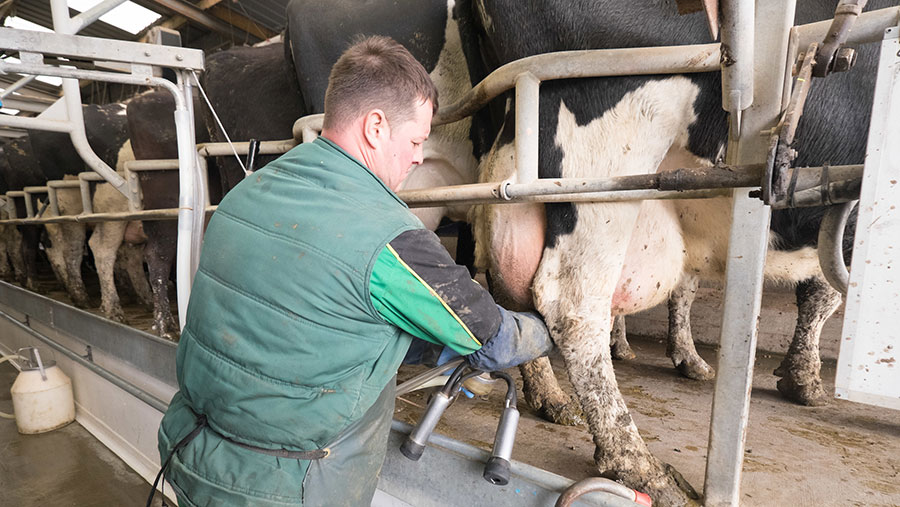Australian dairy farm hits 11 labour hours a cow a year
 © Tim Scrivener
© Tim Scrivener Controlling labour costs is an important factor in running a profitable dairy and can be achieved by a range of decisions across the entire farm.
Labour hours have been minimised at Chris Proctor’s Lesper Park farm, Mount Gambier, South Australia, where labour is down to 11 hours a cow a year (not including contracting), the Positive Farmers Conference, held in Cork, Republic of Ireland, heard last week (10-11 January).
Strict Australian labour laws ensure farm managers run a tight ship, explained Mr Proctor, who has cut labour hours to 13 hours a cow on his Wotton Park farm and 11 hours a cow at Lesper Park in South Australia.
This has left labour costs at 74 cents/kg milk solids (MS) compared with the average top 20% at AUD1.10/kgMS.
He said the law keeps labour hours down to a maximum of 152 hours over a four-week period.
Selecting amiable staff
Revealing the secrets to Lesper Park’s labour efficiency, he said the number one rule is to select people you can get on with, that have other interests and you can enjoy a beer or a chat with at the end of week.
This helps communication of key performance indicators such as what average residual covers are and what cover the herd is going into and makes weekly meetings pleasurable.
Train staff
Any staff training desired is paid for by the business after six months at the farm. Herd managers have done diplomas and the farm secretary has done a human resources course. This keeps staff motivated and more competent/skilled.
Farm set up
The farm runs a 19-day rotation at peak grass growing season so it has 19 paddocks, ranging from 6.8ha to 8.4ha. Paddock uniformity simplifies grazing management for staff.
Tree clearing and refencing has been necessary to produce a perfect farm set up, help cows fly and produce in four circular sections of paddock for pivot watering and troughs positioned for 12-, 24- and 36-hour shifts.
Walkways
Farms only have 1km to walk on 9m wide limestone tracks, which the farm is lucky to be able to source locally. Wide tracks mean cows can walk up to three abreast, saving on walking time. Good tracks mean lameness issues are minimal, with a maximum of 20 feet being lifted each year (2.5-3.2%).
Irrigation
With plenty of sunshine, irrigation can be used to yield grass predictably to within under 5% variability at 85% grazed grass a year, thus reducing the need for supplementary feeding and extra work.
Simple calf rearing
A designated calf rearer operates in one calf shed meaning routines can honed to save time and experience is built up over the year. Bull calves leave at about four days of age.
Calves are fed twice a day for a week then once a day in groups before going out to paddocks near the calf shed at three-and-a-half weeks.
From five weeks they graze unirrigated areas of the farm before going off to a contract heifer rearer at six months of age who is paid per kg of weight gain.
Equipment
Time is saved on maintaining equipment by buying all machinery new.
Efficiency keeps tractor hours to below 500 hours/year and falling.
Whiteboards are used across the farm to relay important messages and tell staff which fields cows need sending to.
Lesper Park, Mount Gambier, Australia
- 620 540-550kg cows producing 560kg a cow
- 224ha of which 146ha is irrigated
- 22t/ha DM possible in irrigated fields, 9t/ha DM in dry fields
- 4.2 cows/ha on irrigated land
- 60 bail rotary cow shed with 650 cow yard
Labour figures
- Labour costs AUD400 a cow a year
- At 74 cents/kg mik solid compared with other top 25% of farms paying AUD1.10/year
